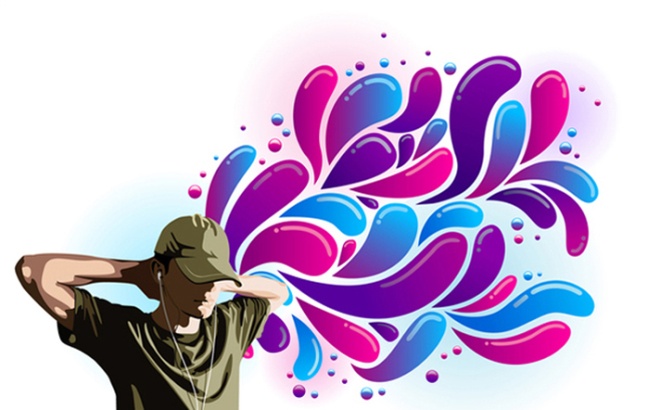
Vector graphics are different from raster graphics like jpeg and bitmap, since vector programs as Illustrator, Freehand or CorelDraw use geometrical elements like points, lines and curves to represent images, rather than an array of pixels. This makes vector graphics very flexible design solutions. With vector art programs, it’s easy to use an artwork in several projects demanding multiple file or print sizes.
You can turn your sketches into vector graphics by using live trace to create the vector lines, vector points on top of your sketch with the pen tool using the sketch as a reference, or by using a Wacom tablet. Each one of them has their own advantages and disadvantages. Live trace is the simplest and perfect for beginners to vector graphics. Most live trace graphics have more lines and are a bit busier than the free hand vector graphics. Free hand vector graphics look a bit cleaner, as they usually have fewer lines.
Until a few years ago most graphic artists were against the “live trace” function in Adobe Illustrator. The function has however improved throughout the various versions of Illustrator. The new Adobe Illustrator CS5 allows you to do a lot in live trace. Live trace has become so popular that some free hand vector artists have started complaining, since it takes hours and sometimes days to create a vector graphic, whereas live trace takes only a few minutes. Still a lot of work in involved in pepping up an image before using live trace to make the vector graphic interesting and attractive. In fact a lot of effort has to be put in original sketching if it is to be vectored using live trace.
Cleaning the scanned image before live trace:
There are a few general rules which have to be followed for sketches before live trace.
Artworks by Manik & Ratan. You can buy the original vector graphics at iStockphoto.com.
Copy this link (right-click + 'copy') on your web
200,000+ Vectors
from $9.99 / month
Any questions? Visit the FAQ
200,000+ Vectors
from $9.99 / month
Any questions? Visit the FAQ